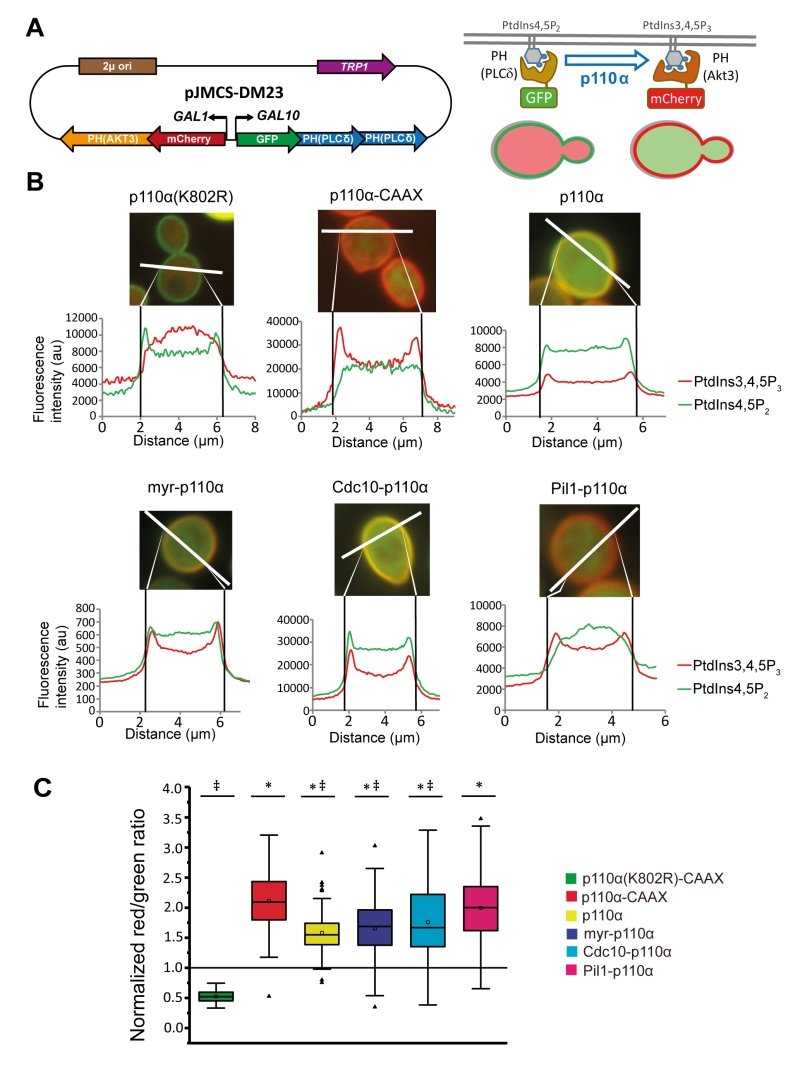Back to article: A humanized yeast-based toolkit for monitoring phosphatidylinositol 3-kinase activity at both single cell and population levels
FIGURE 3: Dual Reporter for the Activity of PI3K (DRAPIK) strategy: a double marker to measure PtdIns4,5P2 and PtdIns3,4,5P3 at single-cell level. (A) Sketch of plasmid pJMCS-DM23, showing its main elements (left) and rationale and experimental design for the double marker analyses (right). Both fluorescent reporters are expressed simultaneously; yeast PM is rich in PtdIns4,5P2 and lacks PtdIns3,4,5P3, leading to recruitment of the green reporter to the PM whereas the red reporter remains cytoplasmic. Expression of PI3K should revert this situation proportionally to its enzymatic activity, the efficiency of its recruitment to the PM, and local substrate availability. (B) Representative fluorescence microscopy merged (red and green channels) images of YPH499 cells co-transformed with pJMCS-DM23 and expression plasmids for p110α(K802R), p110α-CAAX, p110α, myr-p110α, Cdc10-p110α and Pil1-p110α PI3K versions. Below, densitometric histograms showing the red (PtdIns3,4,5P3) and green (PtdIns4,5P2) fluorescence intensity in arbitrary units (au) along a transversal section of the cell, depicted above in white color, whose distance is represented in µm in abscissae. (C) Graph representing normalized red:green ratio [(PtdIns3,4,5P3) vs (PtdIns4,5P2)] for a population of individually monitored randomly chosen cells (n=90 per experiment) adjusted to a normal distribution. Cells co-express the same plasmids than in (B). The symbols *, ‡ and # express statistical significance when compared to p110α-KD, p110α-CAAX or Pil1-p110α, respectively (Bonferroni p-value < 0.01 for two symbols and < 0.001 for three). The symbols ▫ and ― represent the average and median values of the population; the colored boxes cluster the data between 25% and 75% of the population; the bars with a capped end (I) cluster the data between 5% and 95% of the population; the outlier data are represented by the symbol ∆.

